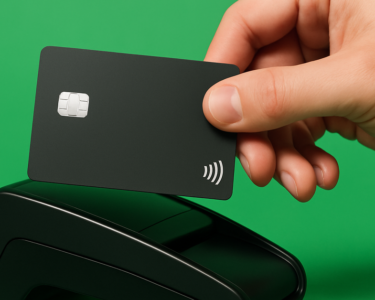Key takeaways
-
Debit card spending limits are safeguards to help prevent excessive, unauthorized spending in case your card or account details are stolen.
-
Limits vary widely by bank.
-
If you need to make a large purchase or regularly run up against your limit, you can ask for either a temporary or permanent increase to your limit from your bank or credit union.
Regardless of how much cash is in your checking account, a daily debit card limit can cause a transaction to be declined.
The daily debit card limit is typically several thousand dollars, though it varies among banks. Those who regularly use their debit card and make large purchases from time to time can request a higher daily debit card limit from their bank.
Here’s everything you need to know about debit card limits.
What are debit card limits?
A debit card spending limit is the maximum amount of money you can spend using your debit card in a single day. These limits are set by your bank or credit union as a security measure, protecting your account from fraudulent activity by preventing sudden, excessive purchases.
Unlike credit cards, debit card limits aren’t usually displayed on statements or mobile apps. To check your daily spending limit, you can:
-
Call your bank’s customer service line
-
Review your account agreement or disclosure documents
-
Contact your bank using the secure messaging on the bank’s website or mobile app, if available
Knowing your limit ahead of time — especially before making a large purchase — can prevent declined transactions and save you time. Also, keep in mind that keeping your daily debit card limit at a level that is appropriate for your spending can help reduce the amount of money someone who has stolen your debit card, or debit card information, can spend in one day.
Compare: See Bankrate’s list of the best checking accounts
How to increase your debit-card limit
1. Call your bank to ask for a daily limit change
Contact your bank to see if it will increase your daily debit card limit on signature and PIN-based purchases.
There are separate debit card and ATM withdrawal limits, so if being able to withdraw large sums of cash is a concern, ask to change the daily ATM withdrawal limit, too.
2. Consider whether you want a permanent or temporary change
Your bank may ask whether you want the limit change to be permanent or temporary.
“A temporary increase in the limit would be warranted for a one-time large purchase,” says Bankrate chief financial analyst, Greg McBride, CFA. “After that purchase, the limit could revert to what it was, reducing the risk of large amounts being fraudulently drained from your account.” A big, one-time purchase, such as an engagement ring, for example, might not warrant a permanent daily debit card limit increase.
Some consumers, however, may want a decrease to their daily debit card limit.
A parent who shares a joint checking account with a student, for example, may ask the bank to decrease the student’s daily debit card limit to keep the student from overspending. It could also help limit the chances of incurring overdraft fees.
“Asking for a decrease in the daily debit card limit could be a good way to rein in overspending, either by yourself or a joint accountholder,” McBride says.
Learn more: Bankrate’s picks for the best joint checking accounts
Debit card limits at banks you may use
These are the default daily spending limits at some well-known banks and credit unions. Some banks set separate limits for ATM cash withdrawals. In the table below, we have noted when a bank includes ATM withdrawals within its debit card spending limits. Otherwise, we are only listing the signature and PIN-based purchasing limits using your debit card, not the ATM withdrawal limit.
It may be possible to increase these spending limits by contacting the bank.
|
Bank |
Daily debit card limit |
|---|---|
|
$2,000 for the first 30 days, then $5,000 |
|
|
$2,000 |
|
|
$5,000 (including ATM withdrawals) |
|
|
$5,000, or $7,500 for Private Client accounts |
|
|
$5,000 for the standard account |
|
|
$1,000 |
|
|
$5,000 |
|
|
$1,000 – $7,500, depending on the account |
|
|
$5,000 for Flagship Checking; $3,000 for all other accounts |
|
|
$4,000 for most accounts |
Note: Limits shown above were gathered June 9 and are subject to change at any time. Limits can differ based on the type of checking account, customer status or specific card features. Always confirm your debit card limits with your bank.
Alternatives for making larger purchases
A debit card may not always be the best option when paying for a large purchase, even if you have the right debit card limit. Consider alternatives when making a large purchase, including:
-
Credit cards. A credit card could be an option for those looking to pay off a larger purchase in increments, though credit cards have limits, too. Be mindful that balances carried over from month to month will accrue interest, which can be substantial and add to the overall cost of your purchase. If you have the funds, be sure to pay off the credit card bill immediately to avoid interest charges and taking on debt. Alternatively, make a payment plan you are comfortable with and confident in so that you can make those payments (including interest) within your timeframe.
-
Wire transfers. You can move money electronically from one bank account to another through a wire transfer. Keep in mind that each bank might charge a fee for incoming and outgoing wire transfers, though some allow free wire transfers. Typically, it’s an instantaneous transfer of money between accounts.
-
Personal loan. If you have a large, lump-sum amount you need right away, you could use a personal loan to cover costs. You can use a personal loan for just about anything, whether it’s covering an emergency or consolidating your debt. Keep in mind that interest rates can vary widely, and taking on new debt means committing to monthly payments that could strain your budget.




